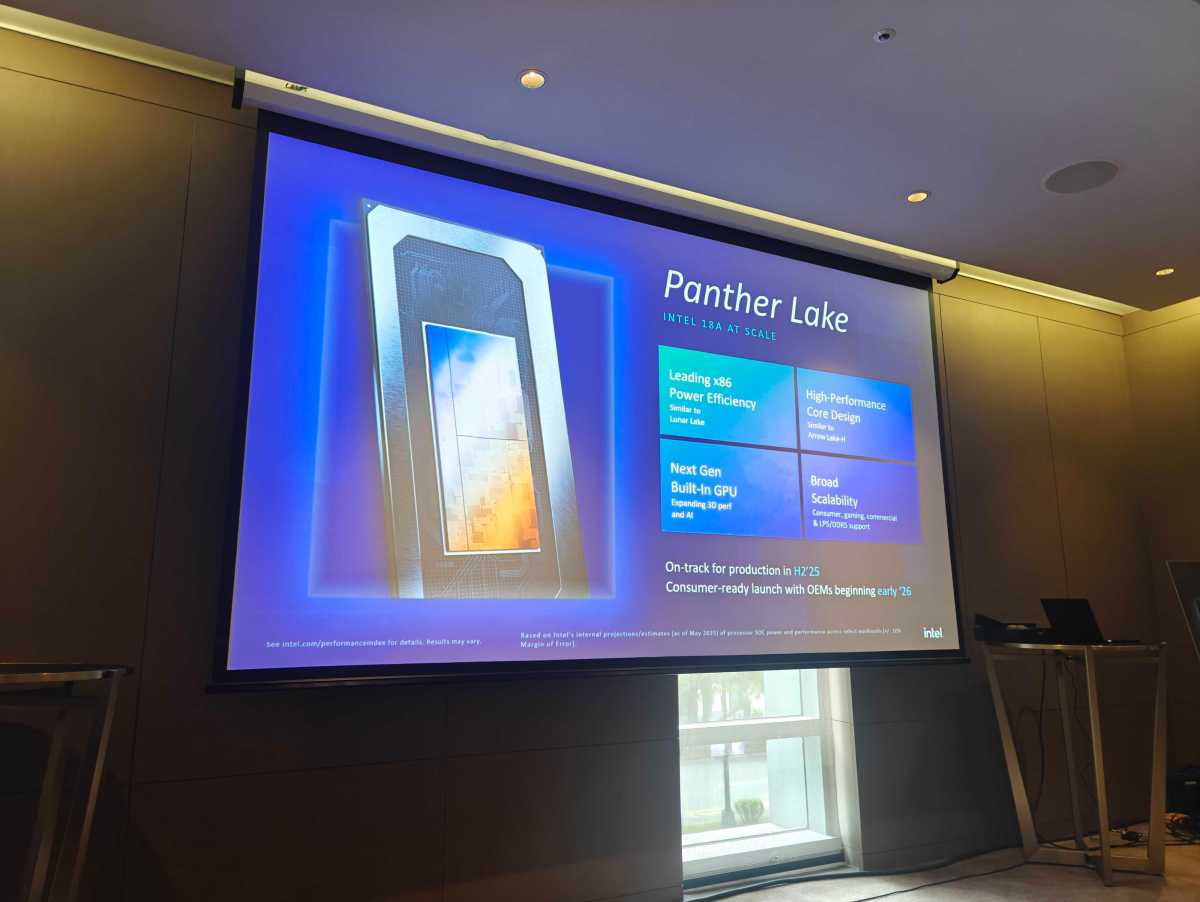Intel said Thursday that the company’s next big CPU bet, Panther Lake, remains on track to begin shipping this year, and the supporting 18A manufacturing process has already entered production. However, Intel plans to end 2025 with just 75,000 employees as it continues reducing its workforce.
Intel chief executive Lip-Bu Tan also characterized Intel’s move away from hyperthreading, begun with its “Arrow Lake” chip, as a mistake.
As Intel reported earnings for the second quarter of 2025, the company’s message was that it continues to execute on a strategy to focus on customers and engineering. As part of that, Intel recorded $1.9 billion in restructuring charges, mostly to do with reorganizing manufacturing and assembly operations.
“I know the past few months have not been easy,” Intel chief executive Lip-Bu Tan wrote in a memo to employees. “We are making hard but necessary decisions to streamline the organization, drive greater efficiency and increase accountability at every level of the company.”
Tan’s goals are to “right-size” the company’s workforce and hold them to account, by both trimming headcount and thinning the ranks of middle management. Tan also said that the company is slowing the development of its Ohio chip fab — which was funded in part by the CHIPS Act, signed during the Biden administration. Intel plans to consolidate its assembly and test operations in Costa Rica to larger sites in Vietnam and Malaysia, and not go forward with “projects” in Poland and Germany. Intel was rumored to possibly shutter operations in Israel, but that hasn’t happened. Tan called Intel’s factory strategy “needlessly fragmented” in a conference call with analysts.
Intel’s chip roadmap is on track…
Tan, however, seems to be completely behind Intel’s existing product roadmap, which is centered on Intel’s next-generation Panther Lake chip and the supporting 18A process. He called the 18A process (and a related 18A-P process) “the foundation of at least the next three generations of Intel client and server products,” Tan said, delivering meaningful wafer volumes into the next decade.
“We actually won’t get to peak volumes on 18A until probably the beginning of the next decade,” Intel chief financial officer David Zinsner said on the call. “So this is going to be a node that we use for a very long time, and we’re expecting a really good ROI [return on investment] on it.”
Intel
That’s a marked shift from past years. Intel just completed a breakneck process of establishing five process nodes in four years, part of former Intel chief executive Pat Gelsinger’s strategy of regaining a manufacturing leadership after years of being unable to move past the 14nm process node. Intel’s 18A process was supposed to be the end of that road, though Intel recently began talking about an “18A-P” process technology, which would include Intel’s RibbonFET and PowerVia technologies.
For now, customers continue to buy older chips like Raptor Lake, and demand for the Intel 7 process technology upon which they are built remains tight, Zinsner said. “I think, you know, the price points of Raptor Lake are, I think, where a lot of consumers and enterprises are buying PCs,” Zinsner said.
Wall Street analysts appeared doubtful, with one even asking whether the manufacturing node beyond 18A, known as 14A, would be too late — or, to put it another way, whether Intel was indirectly saying that it would exit the foundry business entirely.
But future products seem a little doubtful
Tan responded by saying that the 14A design team is “laser focused” on ensuring the basic building blocks of the technology. But it sounds like Tan might be leaving Intel’s options open. “The 14A is a process node, but clearly I will make sure that, you know, I see the internal customer, external customer volume commitment, before I put cap[ital] back into the operation.”
Tan said later that the 14A process should debut in 2028 or 2029.
Soon, however, Intel expects customers to transition to the newer chips.

Adam Patrick Murray / Foundry
“Panther Lake is our top priority as it will reinforce our strength in notebooks across consumer and enterprise,” Tan told employees. “We also must drive continued progress on Nova Lake to close gaps in the high-end desktop space.”
The first Panther Lake processor remains on track to begin shipping later this year, with additional products coming in the first half of 2026, Intel said.
Tan said that he will sign off on every new major product before it tapes out. Tan also said in an analyst call that he was not a believer in “if you build it, they will come.” Instead, Intel will build what customers want, when they need it, he said. Tan said he is also in favor of “cleaner,” more efficient designs.
Interestingly, Tan also criticized Intel’s decision to eliminate hyperthreading, also known as simultaneous hyperthreading (SMT). Though he addressed this as an issue in the data center, it will be interesting to see whether Intel makes a similar decision to return hyperthreading to its desktop and client chips, as well.
“Moving away from SMT put us at a competitive disadvantage,” Tan said. “Bringing it back will help us close performance gaps.”
Finally, Intel will move away from a strictly silicon-based approach to AI. “We will focus our AI efforts on developing a cohesive silicon, system, and software stack strategy,” Tan said.
“We have a lot to fix to move the company forward, Tan said. “And I’m determined to drive the changes necessary to improve our performance.”
Intel lost $2.9 billion for the second quarter, under the GAAP method, recording flat revenue of $12.9 billion. Intel’s outlook, however, was better than expected: $12.6 billion to $13.6 billion, which was more than what Wall Street expected. Intel’s Client Computing Group revenues fell 3 percent versus the same quarter in 2024, down to $7.9 billion.
This story was updated at 3:29 PM with additional details.

